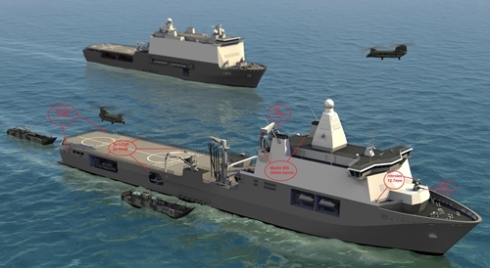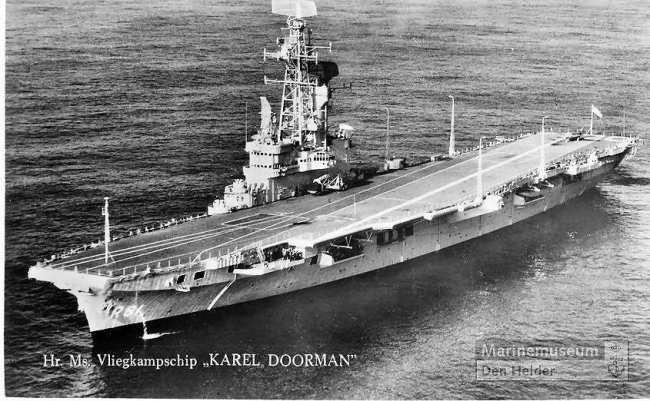-
STOM :
http://www.youtube.com/watch?v=KsvE7pfBn3I
-
JSS KAREL DOORMAN
http://www.youtube.com/watch?v=hhvf8zsPlW0
Ship-To-Objective Maneuver (STOM )
Marine Corps forces have long provided a scalable, tailorable and expeditionary combined-arms option, enabling joint commanders to deal with a wide range of contingencies. For decades, however, Marine power projection has included a deliberate buildup of combat power ashore. This buildup required the establishment of a force beachhead, with relatively fixed fire support, logistics, and command and control positions located ashore. Only after naval forces fought ashore and established a beachhead would the MAGTF begin to focus its combat power on the Joint Force’s operational objective. A combination of naval initiatives in advanced , fires, and sustainment capabilities, leveraging substantially enhanced information connectivity, will enable future Marine forces to be employed in a dramatically different manner, making them an even more effective tool of national power.
Ship-to-Objective Maneuver (STOM) is a transformational tactical application of enduring naval capabilities for Operational Maneuver from the Sea (OMFTS) and exploits each of the enhanced capabilities described by Expeditionary Maneuver Warfare (EMW). Enabled by persistent, responsive, and dynamic sea bases, forward deployed in international waters, naval forces executing STOM will be able to project Marine Air-Ground Task Forces (MAGTFs) directly to critical operational objectives located deep inland, dislocating our adversaries both in space and in time. STOM includes combined arms penetration and exploitation operations from over the horizon by both air and surface means, with forces moving rapidly to operational objectives without stopping to seize, defend, and build up beachheads or landing zones.
STOM provides the Navy – Marine Corps Team with an enhanced sea-based forcible entry capability, optimized for the introduction of follow-on Air Force, Army and multinational forces. In combination with other joint forces, naval forces capable of operational maneuver and STOM can also provide the Joint Force Commander with Operational Maneuver Elements (OMEs), ideal for creating dilemmas for adversaries during sustained operations ashore. Because naval forces able to conduct STOM will be able project power more swiftly than ever before, they will be able to not only “kick down the door” that the enemy’s defense’s present, they will also be able to “get a foot in the door”, and preclude him from effectively integrating his anti-access defenses as crises threaten.
Ship-to-objective maneuver (STOM) is the tactic that provides the joint force commander (JFC) with the capability to employ the Marine air-ground task force (MAGTF) in an exponentially more efficient and potent manner, with the leverage and to achieve operational objectives across a broad range of operations. Current amphibious doctrine relies on attrition warfare and the philosophy of amphibious lodgment. The traditional phases and sequences involved in securing a beachhead often negate any advantage gained by maneuver at sea. STOM exploits emerging technology to employ the concepts of maneuver warfare, projecting the power of a combined arms force by air and surface means directly against operational objectives. STOM tactics focus on the principles of maneuver and sea-basing. Force structure and technology serve as enablers of STOW tactics and doctrine. The real power of STOW lies in the strength of the concept and the application of STOW principles.
The Marine Corps Concept Operational Maneuver From The Sea (OMFTS) was signed by the Commandant of the Marine Corps in January 1996. The follow-on concept of Ship-To-Objective Maneuver (STOM) was signed in July 1997. This concept of operations (CONOPS), begun in February 1999, was developed as a first step in defining the parameters of these concepts and other companion concepts. It also began the process of validating mission requirements for a STOM capable force.
STOM surface assault will utilize all of the lighterage available within the ATF/MPF(F) in order to maximize the rapid build-up of combat power ashore from the sea base. LCACs are capable platforms, but lack a heavy lift capability. The LCU(X), that will provide heavy lift, is still in the initial stage of development. The Navy and Marine Corps should work to develop a family of future lighterage that can provide the interface between the various platforms (MPF(F) and ATF) of the Task Force.
The surface battlespace begins 25 nautical miles over the horizon (OTH) and extends inland for another 175 nm for a total of 200 nautical miles. The advent of the MV-22 and the AAAV allows the MAGTF to operate at much greater distances from shore. However, in the case of the AAAV, the ratio of sea time to land time affects sustainment planning.


Plaats een reactie